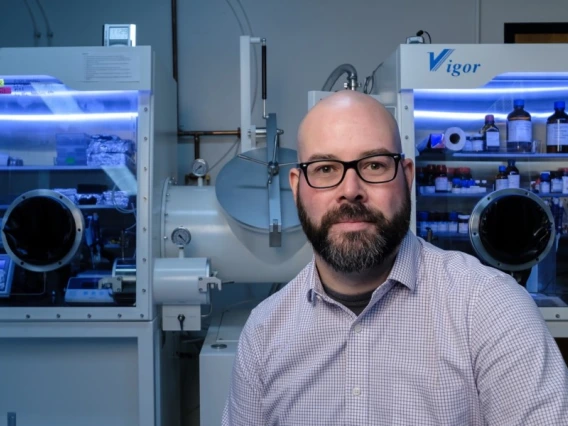NSF CAREER Awardee Develops a 1-Minute Frailty Testing Platform
A University of Arizona professor is developing a quick and accurate way to screen patients for frailty, and better inform physicians’ care decisions. In tandem, he’s helping students at the crossroads of and engineering and medicine choose their...

No description provided
A layperson might think of “frail” as simply a synonym for “weak” or “fragile.” But in the medical field, frailty is a specific term, meaning – due to factors including inflammation and hormone shifts – a patient has a lack of physiological reserve, or a reduced ability to tolerate stress.
“That stress can be anything from the simple event of falling to getting COVID or another infectious disease,” said Nima Toosizadeh, assistant professor of biomedical engineering and medicine. “Or, it can be a treatment that might be invasive for patients. Knowing who can tolerate the stress is critical.”
It is critical because frailty impacts treatment decisions. For instance, a doctor might be less likely to recommend a risky procedure like open heart surgery to a frail patient, instead opting for other options that don’t impose high levels of stress. A frail patient with COVID-19 will receive specialized care, compared to a non-frail patient. Frail patients are also at an increased risk for depression, because a loss in muscle mass can lead to reduced mobility that sometimes results in isolation.
With a $580,000 CAREER Award from the National Science Foundation, Toosizadeh is developing and perfecting a new method to diagnose frailty: attaching wearable sensors to measure motor, heart, and brain function, and asking older adult patients to bend and straighten the arm for less than a minute.
“It’s just bending the elbow,” said Toosizadeh, who joined the university as a postdoctoral researcher in 2013 and became a faculty member in 2017. “The whole point is to make it easy for the clinicians and patients to do.”
A Little Elbow Grease
Current methods for diagnosing frailty can be impractical in clinical settings. One method is a 72-point questionnaire that asks about cognitive and physical frailty symptoms. The other primary method involves about 45 minutes’ worth of tasks for patients to complete, and it is partially subjective.
Toosizadeh’s lab is centered on the mission of assessing frailty and how it impacts motor function, cognitive abilities, and cardiac autonomic control. Not only is his group the first to measure frailty using wearable sensors, it’s also the first to use these measurements to look specifically at the interactions of different systems involved in frailty, rather than examining each one individually.
After years of collecting data from more than 1,000 patients, Toosizadeh and his team previously developed a test for physical frailty in which patients bend and straighten their arms as fast as they can for just 20 seconds. That’s just long enough to yield accurate results, while being as short as possible to reduce inconvenience for patience. Sensors on the patients’ arms use this minor source of physical stress to predict how patients might respond to a much bigger one.
With the NSF funding, the team is developing a test for two other frailty components: cardiac autonomic control and cognitive impairment. To measure cognitive frailty, they’ll implement a “dual-tasking concept,” involving simultaneous arm movements and counting, for one minute. Patients also wear sensors on their heads to measure brain function.
“What you’re trying to do is put some cognitive burden on the patient while we’re measuring their brain function and their motor task,” Toosizadeh said. “And, based on that, we can also determine the cognitive status of the patient.”
The team is also working on an app that could someday monitor frailty symptoms with an everyday sensor like a smartwatch. While the app itself wouldn’t be a diagnostic or prevention tool, doctors could use this information about the patient’s health to make more data-informed decisions.
Training the Next Generation of Physicians and Engineers
Toosizadeh works closely with Focusing Research on the Border Area, (FRONTERA), and Border Latino and American Indian Summer Exposure to Research (BLAISER), two initiatives at the University of Arizona designed to provide research experience for undergraduates. The CAREER Award will also help systematize and streamline this partnership to benefit the maximum number of students.
Toosizadeh said he aims to help students move beyond a summer research experience and start to develop future career maps.
“A lot of students are in biomedical engineering and aren’t sure whether to go to medical school, enter industry or pursue research,” he said. “This gives them an idea of what it would be like to be on both sides – collecting data as a researcher and being in the hospital as a medical provider to patients, as well as doing programming, developing codes, and doing post processing on the engineering side.”



